Bruce Dowbiggin
Concussed: The NFL Needs Its Head Read
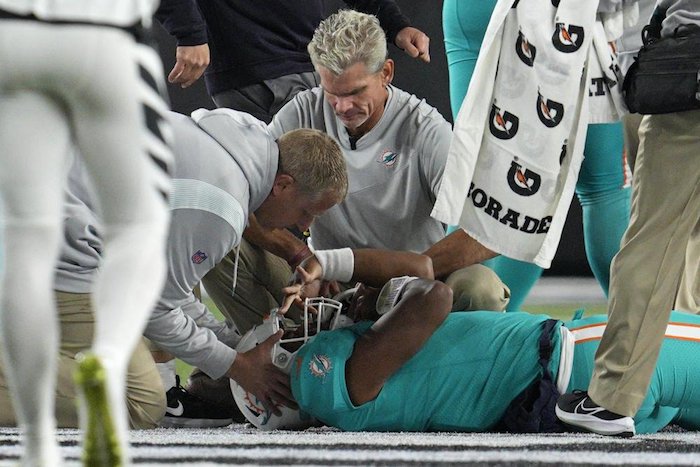
Sign up today for Not The Public Broadcaster newsletters. Hot takes/ cool slants on sports and current affairs. Have the latest columns delivered to your mail box. Tell your friends to join, too. Always provocative, always independent. https://share.hsforms.com/16edbhhC3TTKg6jAaRyP7rActsj5
In 2014 Tipping Point author Malcolm Gladwell commented that, within 25 years, the NFL might become a renegade sport outside the mainstream of culture. “We will go to a middle position where we will disclose the risks and essentially dare people to play …,” Gladwell repeated in the recent film United State of Football “That’s what the Army does. So we leave the Army for kids who have no other options, for whom the risks are acceptable.
“That’s what football is going to become. It’s going to become the Army. That’s a very, very different situation. That’s a ghettoized sport, not a mainstream American sport.” Many derided Gladwell at the time, but events this past week have leant credence to his theory.
Perhaps it’s the hangover from being lied to about The Science of Covid-19 by the mahatmas of healthcare. But if the NFL medics were hoping the public would give them the benefit of the doubt about their treatment of the gruesome Tua Tagovailoa head injury the past ten days they are sadly mistaken.
For a league that has pounded its chest about its attempts to lessen the danger from head hits, the farce that followed Tagovailoa’s injury the past week is a cruel deception. Whatever the facts eventually reveal (the NFL says it’s investigating) the PR failure of a system designed to protect employees is irreversible.

Former All Pro and now NBC broadcaster Rodney Harrison summed up the players’ reaction to the Tua episode. ““Please take care of yourself. Don’t depend on the NFL. Don’t depend on anybody. If something’s wrong with your head, report it.” – @Rodney_Harrison
Tagovailoa exhibited concussion symptoms after hitting his head late in the first half of Miami’s Week 3 game against Buffalo. He staggered and weaved before being helped off the field and into the dressing room. He was soon cleared by a team physician and an unaffiliated neurotrauma consultant to return in the second half as Miami beat the favoured Bills. Tagovailoa and the team later said his legs were wobbly because of a back injury.
Dolphins head coach Mike McDaniel said that he was comfortable with his team’s processes regarding Tagovailoa’s health and clearance to return to play so quickly. “He was evaluated and then cleared by several layers of medical professionals, who – I don’t pretend to be one – but those people, the collection of them, cleared him of any head injury whatsoever. He had a back and ankle issue.” The team said it was good with sending Tagovailoa to play in Cincinnati. again on Thursday, just four days later.
Bad idea. After the Dophins QB rolled out on a play, 340-pound Bengals defensive tackle Josh Tupou slammed Tagovailoa backward into the turf. In the classic sign of concussion, Tagovailoa’s hands froze in an upright position while his fingers splayed awkwardly as he lay still on the ground. After a long delay he was taken away on a stretcher and sent to a local hospital. He was later released from the hospital and flew home with the Dolphins hours later.
The tsunami of outrage from media, fans and players quickly destroyed the NFL’s cultivated narrative of a proper protocol. So a scapegoat had to found. Accordingly, the neuro-trauma consultant who let Tagovailoa back into the Bills game in Miami was fired by the NFLPA after it was discovered that the doctor has made ‘several mistakes’ in his evaluation.

Sure. You go with that. Baltimore head coach John Harbaugh— for one— was not buying., “I couldn’t believe what I saw,” Harbaugh said about Thursday night’s re-injury. “I couldn’t believe what I saw last Sunday. It was astonishing to see. I’ve been coaching for 40 years — college and the NFL — and I’ve never seen anything like it before.”
Players present day and retired chimed in. Chris Long: “Now IF protocol wasn’t followed & I’m a coach or executive who greenlit him playing 4 days after a head injury… I have no idea how you’re focused on the game… shit is going to get real.” Patriots star DB Adrian Phillips: “Dude should not have been playing tonight.”
Shannon Sharp: “That’s a serious injury . Tua shouldn’t have been out there with Sunday Thursday turn around. Sometimes players need protecting from themselves. Dolphins failed Tua”
Ben Watson: “I know what I saw and Tua was concussed last week. The fact that he was able to return to play is everything that’s wrong with the game so many of us love. A full investigation is forthcoming. Praying for this young man right now. This is awful to witness.”
What even lay people now understand is that one brain injury makes a person more vulnerable to another injury— especially in a short period of time. Meaning the NFL needed to be extra diligent with Tagavailoa. They failed. Now no one can say when— or if— Tagavailoa will return to playing.
While attention is focussed on the NFL’s shortcomings it needs to be pointed out that the NHL continues its own nonsense over brain injuries. Knowing what is known now the league still allows fit, powerful players to punch each other in the head over… no one is sure. If Don Cherry were still the measuring stick he’d say it’s about honour.
NHL commissioner Gary “The Good Doctor” Bettman somehow can say that the link between punching a man in the head and brain trauma is still unproven. He seems unaware that protecting the NHL’s sluggo past may make him popular with his owners, but sponsors and fans are no longer with him.

Jarred Tinordi #24 of the Montreal Canadiens fights with Cody McLeod #55 of the Colorado Avalanche in the NHL game at the Bell Centre on October 18, 2014 in Montreal, Quebec, Canada. (Francois Lacasse/NHLI/Getty Images)
They are eventually going to follow Gladwell’s advice and avoid a lucrative sport that employs only those who have nothing to lose.
Bruce Dowbiggin @dowbboy is the editor of Not The Public Broadcaster (http://www.notthepublicbroadcaster.com). A two-time winner of the Gemini Award as Canada’s top television sports broadcaster, he’s a regular contributor to Sirius XM Canada Talks Ch. 167. Inexact Science: The Six Most Compelling Draft YearsIn NHL History, , his new book with his son Evan, was voted the eighth best professional hockey book of by bookauthority.org . His 2004 book Money Players was voted seventh best, and is available via http://brucedowbigginbooks.ca/book-personalaccount.aspx
Bruce Dowbiggin
WOKE NBA Stars Seems Natural For CDN Advertisers. Why Won’t They Bite?
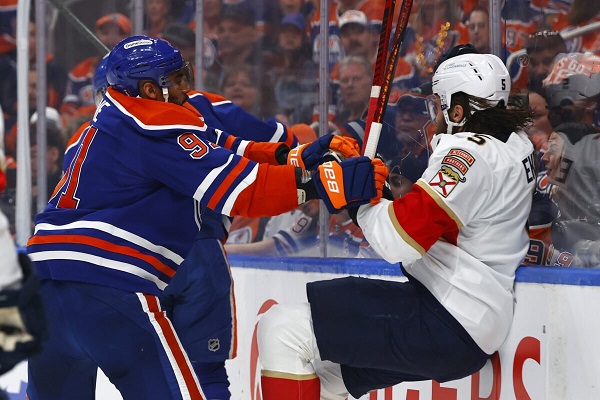
The wonderful people who brought you Elbows Up and Don’t Shop At Home Depot! are now on to Edmonton Oilers Bring Home The Cup. In response to no Canadian-based team winning the Stanley Cup since 1993 the corporate nostalgia folks are linking arms with Connor McDavid & Co in their struggle with the dastardly Florida Panthers. The Oil are now Canada’s team!
In one bit they were taking ice shavings from McDavid’s home rink in southern Ontario to mix with the frozen Zamboni water of Edmonton’s Rogers Place arena. Okay, they have eight players on the Oilers roster who aren’t Canadian (hello Leon Draisaitl), and the stars now killing it for the Panthers, Sam Bennett and Brad Marchand, are from Ontario. But never mind. Like playing Mr. Dressup trivia with Mike Meyers it’s just too good an idea to waste.
The outcome of all this patriotic wind therapy will be determined Tuesday— or Thursday at the latest. But it will have achieved the desired goal of warming the cockles of all those Canadians who turtled in the election, flipping back to Mark Carney’s Liberals when the going got a little rough with Donald Trump. Resulting in a maximum four more years of Carney’s faculty lounge of dunces and Kamala Harris clones.
While the marketers were playing the Maple Syrup March over the Stanley Cup Final they missed an even better opportunity to marry Canadian patriotism with sport. We speak, of course, of the inevitable crowning of Canadian stars as champions of the NBA. In fact the entire progress of the postseason in the sneaker league has witnessed great Canadian results.
Not least of which: Hamilton’s Shai Gilgeous Alexander winning the NBA MVP while leading his Oklahoma City Thunder to the brink of the NBA crown. For those distracted by Stu Skinner and Corey Perry, SGA is a revelation, If you missed him leading Canada back to the Olympics last year the wiry 26-year-old is a lithe, unstoppable chinook who routinely scores 30 points a game.

He has help from another Canadian, Montreal’s Lu Dort, a finalist for NBA defensive player of the year, who also led Canada to the Olympics. As unstoppable as SGA is, Dort is immovable. But that’s not all the Canadian content. In the Finals they are up against two more Canadian teammates from last year. Aurora Ont.’s Andrew Nembhard is the back-court catalyst for Tyrese Haliburton’s Indian Pacers, taking them to the Eastern title and within two wins of the NBA title. He’s assisted by another Canadian, Montreal’s Benedict Mathurin, the hero of the Game 3 win for the Pacers. They’re now household names.

The Canadian content didn’t end there, either. In the semifinals, the Thunder beat the Minnesota Timberwolves featuring SGA’s cousin Nickeil Alexander-Walker , another alumnus of the CDN national team. At one point the two close friends were anything but friendly, shoving each other under the basket.
They had Canadian company in the postseason. In earlier rounds R.J. Barrett and the New York Knicks made it to the second round in the East, Jamal Murray’s Denver Nuggets fell to the Thunder in Round Two, while the Houston Rockets and Mississauga’s Dillon Brooks, a tenacious physical presence, lost to Steph Curry’s Golden State Warriors . Meanwhile, Corey Joseph’s Orlando Magic lost in the first round to Boston.
But the Canadian content didn’t end there. The Toronto Raptors, NBA champs of 2019, are now spread throughout the league, affording nostalgic Canadian fans a rooting playoff interest in players such as Pascal Siakim, who’s pairing with Nembhard and Mathurin to push the upset-minded Pacers, shooting guard OG Anunoby teamed with small forward R.J. Barrett on the Knicks and point guard Fred Van Vliet of the Rockets. All harkened back to the Raptors’ greatest days.
But in the heat of Elbows Up marketing these great performances don’t seem to get a sniff from marketers looking to promote Canadian unity in these fractious days. While the sports networks give airtime to the stories in the Association. the general public and advertisers have little time or inclination to draw patriotic strength from these young men.
Before we completely condemn Canadian marketers it should be noted that the interest in the NBA in general is waning. The NBA has lost 75 percent of its TV audience since the Michael Jordan peak while many other sports — NFL, men’s & women’s college basketball, college football — have set record TV ratings. Yes, TV ratings in many fields have dropped since the 1990s. Still, it seems significant.
The problem for the NBA in a Time of Trump is its embrace of hard-left politics. Whether it’s LeBron James defending Chinese shoe manufacturers, the slavish devotion to #BLM even as its corruption is revealed and a maniacal obsession with Donald Trump (and embrace of Kamala Harris) the NBA has made its bed with radical political and cultural elements. It’s as if the Trump election and cultural shift never happened.
In this wilful blindness they are supported by their media partners whose own credibility is at an all-time low after carrying water for the Biden farce and Kamala’s erasure. Ironically, this is the same political crash car running Canadian politics at the moment. You’d think that would make the NBA— and its sister Women’s NBA—like catnip to the Canada Not For Sale crew.
So far the hockey quest is foremost in their minds. But perhaps when SGA holds the Larry O’Brien Trophy they might just achieve the symbiosis that the sport has always coveted.
Bruce Dowbiggin @dowbboy is the editor of Not The Public Broadcaster A two-time winner of the Gemini Award as Canada’s top television sports broadcaster, his new book Deal With It: The Trades That Stunned The NHL And Changed hockey is now available on Amazon. Inexact Science: The Six Most Compelling Draft Years In NHL History, his previous book with his son Evan, was voted the seventh-best professional hockey book of all time by bookauthority.org . His 2004 book Money Players was voted sixth best on the same list, and is available via brucedowbigginbooks.ca.
Bruce Dowbiggin
Canadians Thinks America Owes Them. Trump Has Other Ideas
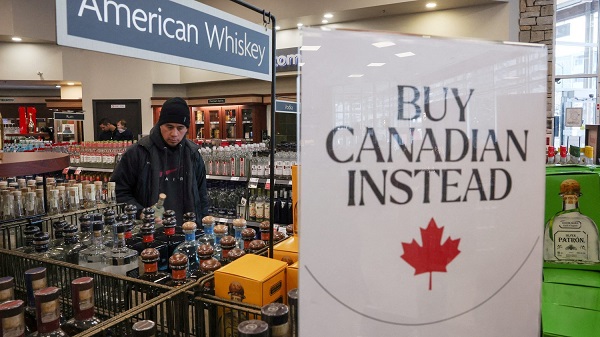
Breaking: It’s now being reported that in the 2024 U.S. election, zero Canadians voted for Donald Trump. In fact, zero Canadians voted for anyone on the ballot. They’re not allowed to. And yet rage monkeys in the Canadian media seem to have the idea that Canada is— and should be— an immediate priority of POTUS 47.
Here’s Globe & Mail/ CBC wind therapist Andrew Coyne about ten exits past normal on the idea of Donald Trump on Canadian soil. Okay, on Alberta soil. “We’re going to roll out the red carpet for the wannabe dictator of America at the very moment he is moving to suppress dissent with armed force?” (You mean like the Truckers Convoy?)
Cartoonist Michael DeAdder, who likely cries if you use improper pronouns, says “Hold my kombucha”. His latest etching has Trump asking a veteran what he did in the war. The witty retort is “Fought against people like you”. Get it? Trump murders six millions Jews. But The Hill keeps this guy working, and the laughs just keep on coming. Free speech!

The presumption is jaw-dropping. Even as Trump’s approval rating hits 53 percent, Canadians online were echoing Democrats’ fever dreams of forming a shadow government to take over from Trump via coup. This sense of impunity at a distance is why the Canadian government— along with other drive-by virtue signallers UK, Norway, New Zealand, and Australia— have imposed sanctions on two sitting members of the Israeli cabinet. They know it will rile Trump’s America.
For ordinary Canadians, Trump became a post-it note to justify giving Team Liberal another swing at ruining the nation. “We used to be such friends! He’s a tyrant.!” This just in: Love him or hate him Trump is employed by Americans to do their bidding. He’s not a sentimental buddy of Canada who’ll cut us some slack for old time’s sake. He has no remittance from Canada to please the Laurentian elites. If your defence is non-existent and your military gender-obsessed: you had it coming.
Are his policies jostling Canada? Absolutely. Read Art of the Deal. The 51st state jibe when Justin soiled himself was rude. But it worked on pliant Canadian liberals. Now the The Little Banker is disavowing the dissolute decade of Trudeau while employing Conservatives’ policies on defence spending, inter-provincial trade and border security. Hell, he’s naming longtime Tories to his personal staff.

In the end Carney knows this ain’t mock Parliament. That his dossier begins and ends with satisfying the beast to the south. None of this should be a surprise. Yet Canadians dozed when Trump made clear in his election campaign that the American economy is the greatest in the world. If you want to fish in that pond it’s not going to be for free. That means tariffs for a range of U.S. industries that couldn’t compete in a Biden world.
We can argue how well tariffs work, but Trump wants them to reduce taxes on the people who elected him. Not the Canadians who fly first class but pay economy. And who have pushed his approval ratings into the 50s, higher than ever before. (Likely to spike higher after the No Kings Riot season peters out.)
No wonder Canadians preferred the guy before Trump, the senile sock puppet whose government was run by anonymous figures using the auto-pen. Sleepy Joe let Canada slide into mediocrity and financial peril without any judgement. It was comfortable. Then The Donald had the nerve to expose the ditch Canada was in.
Canada, Trump pointed out, was delinquent on its defence, harbouring Chinese drug lords, printing money like Canadian Tire and its banks were involved in money laundering. That was the nice stuff. Try Organized fentanyl networks operating with impunity in the largest cities of the nation So dumping on Trump in salty cartoons allows Canada’s Mod Squad to ignore the real issues that should have been litigated in the April election.
We have written extensively about the ruse that was played on gormless Canadians in “U.S. Voters Smelled A Rat But Canadian Voters Bought The Cheese” We have catalogued Canada’s drug and money laundering disgrace in “Chinese Gangs Dominate Canada: Why Will Voters Give Liberals Another Term?” We’ve described the real-estate bubble economy created by Trudeau and sidekick Carney that threatens to crash the economy and ruin seniors’ pensions in
In the end, it is still la-la-la-la We Can’t Hear You. Trump-obsessed Boomers more concerned with the equity in their jumped-up bungalows gave the finger to the next generations and blamed it all on Orange Man Bad. In the monotone of Canadian political comment it all seemed so easy. Turn against Trump. Cash another dividend. Cheer on MSNBC and CNN bitch sessions.
The Family Compact don’t get it. Their Antifa heroes down south plan demos and “nonviolent” activity to crater the public resolve. In Canada that still works. But in the U.S. the Covid reverb is hitting the natural governing class of the nation. While they craft fine phrases about democracy the consumers remember them using a virus to stop society.
The appetite for Gavin Newsom blovaitors and Jen Psaki fart catchers is crashing in America. Riots may be coming in the U.S., but it won’t be like George Floyd and Covid and the pussy hats. At some point Canada’s docile classes better wake up, too. America owes them nothing. They need to earn the respect.
Bruce Dowbiggin @dowbboy is the editor of Not The Public Broadcaster A two-time winner of the Gemini Award as Canada’s top television sports broadcaster, his new book Deal With It: The Trades That Stunned The NHL And Changed hockey is now available on Amazon. Inexact Science: The Six Most Compelling Draft Years In NHL History, his previous book with his son Evan, was voted the seventh-best professional hockey book of all time by bookauthority.org . His 2004 book Money Players was voted sixth best on the same list, and is available via brucedowbigginbooks.ca.
-

 Health2 days ago
Health2 days agoLast day and last chance to win this dream home! Support the 2025 Red Deer Hospital Lottery before midnight!
-

 conflict2 days ago
conflict2 days ago“Evacuate”: Netanyahu Warns Tehran as Israel Expands Strikes on Iran’s Military Command
-
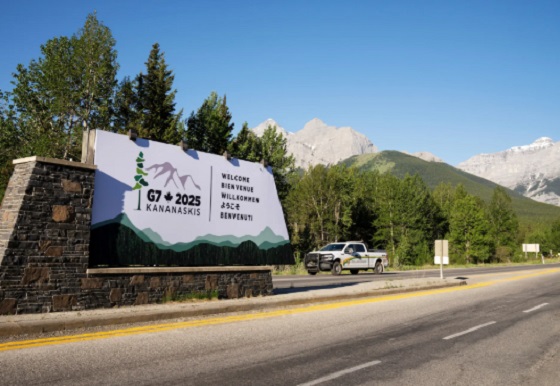
 Energy1 day ago
Energy1 day agoKananaskis G7 meeting the right setting for U.S. and Canada to reassert energy ties
-
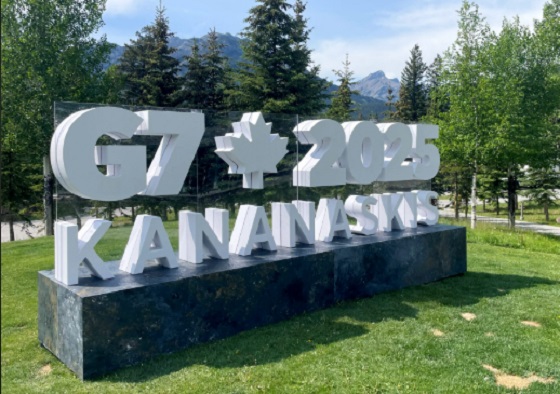
 Business1 day ago
Business1 day agoCarney’s Honeymoon Phase Enters a ‘Make-or-Break’ Week
-
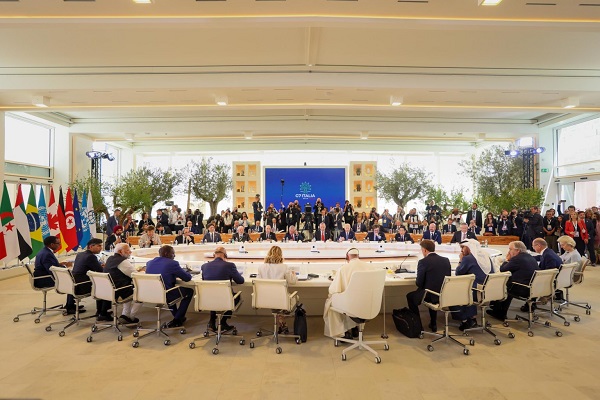
 Energy2 days ago
Energy2 days agoCould the G7 Summit in Alberta be a historic moment for Canadian energy?
-

 Aristotle Foundation2 days ago
Aristotle Foundation2 days agoThe Canadian Medical Association’s inexplicable stance on pediatric gender medicine
-
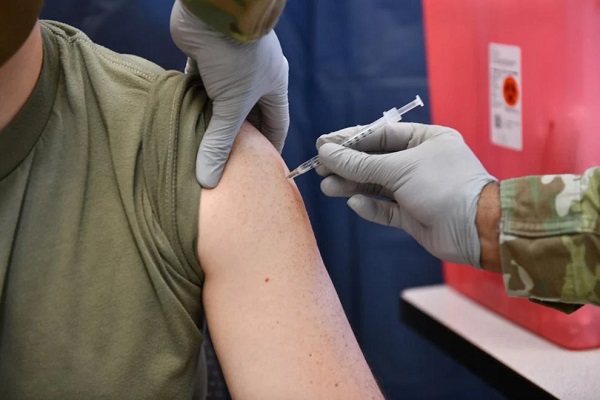
 Alberta1 day ago
Alberta1 day agoAlberta announces citizens will have to pay for their COVID shots
-
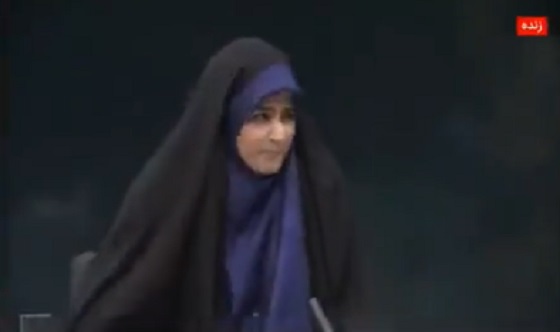
 conflict1 day ago
conflict1 day agoIsrael bombs Iranian state TV while live on air






